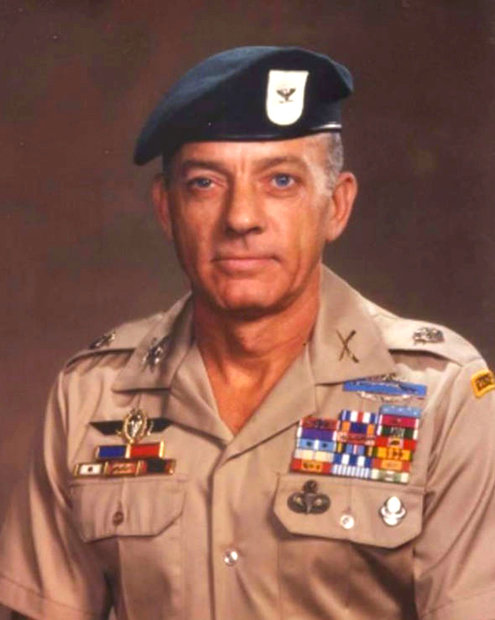Lee Mize as he was known to his friends was awarded the Medal of Honor for incredible valor in the Korean War as an enlisted man, later became an officer and served in Special Forces for three and a half tours in Vietnam before retiring in 1981. Mize was born August 28, 1931 in Albertville, Alabama as the son of a sharecropper. He was forced to leave school after just the ninth grade to help his family put food on the table as was very common throughout the United States in that era.
Mize tried several times to enlist in the Army but was rejected for being too light at just 120 pounds. He finally got in when his mother signed an affidavit to affirm his age as a tornado had destroyed all of his town’s records while he was young. Mize became an infantryman in the 82nd Airborne Division and was about to finish up his tour and go back to finish schooling and attend college when the Korean War broke out. He re-enlisted in the hopes of getting sent to Korea.
Medal of Honor Action at Outpost Harry: He would get his wish and be involved in some horrific combat there. Assigned to Company K, 15th Infantry Regiment, Third Infantry Division, was helping to defend a strategic hill near Surang-ni in mountainous South Korea. The hill, called Outpost Harry by the Americans, sat between American and Communist lines, each several hundred yards away. Coincidentally, the 15th Infantry Regiment was the same unit that Audie Murphy served in during World War II.
The legend that was told of Mize was that when he took back the machine gun nest, he dispatched the last of the Chinese soldiers with an entrenching tool when his weapon ran out of ammunition. There was a bronzed “E-Tool” that would hang over his desk later in his career. He did tell the local (Gadsden, AL) newspaper that he went “combat crazy” during the pitched part of the engagement. “I thought I’d bought the farm,” Col. Mize told VFW Magazine in an interview. “I just knew I was going to die. I knew it. I accepted it. All I wanted to do was take as many of them with me as I could.”
At one point, as an enemy soldier stepped behind an American and prepared to fire, Sergeant Mize killed him. At dawn, he helped regroup for a counterattack that drove the enemy away. He was personally credited with killing 65 of the enemy. In fact, it could have easily been much more. Of the 56 men on Outpost Harry, only eight survived. Mize remained in the Army and became an officer. In 1962 he attended the Special Forces Officers Course training and was assigned to the 7th Special Forces Group. In late 1963, he was assigned to the 5th Special Forces Group, where he was deployed to Vietnam on his first tour as an A-Team Leader. In 1965, he was assigned to the Special Forces Training Group, where he was the Advanced Training Committee chief for SCUBA, HALO, and the SKYHOOK schools. Colonel Mize is credited for being the officer responsible for starting the present day Combat Divers Qualification Course in Key West, FL. In 1975 Colonel Mize was reassigned to Fort Bragg, North Carolina, where he was initially the Special Forces School Chief for the Field Training Division and Resistance Division and later the Commander of the Special Forces School. At that time, the US Army JFK Institute for Military Assistance, (IMA). Later this was changed to the Special Warfare Center (SWC). Mize retired in 1981. Colonel Mize’s awards include the Medal of Honor, Silver Star, Legion of Merit (with Oak Leaf Cluster), Bronze Star (with four Oak Leaf Clusters), Ranger Tab, Master Parachutist Badge, SCUBA Badge, and the Combat Infantryman’s Badge (2nd award). Colonel Mize passed away on March 12th 2014 of cancer. The V.A. Medical Clinic and Patriot Park in Gadsden Alabama are named in his honor.


